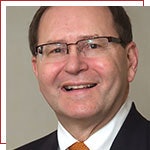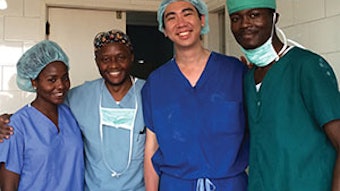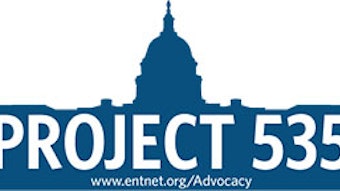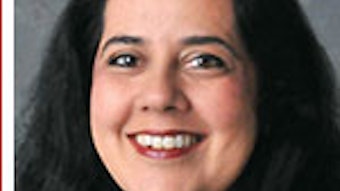Gaining public trust
Imagine that you are dependent on a system that you have been familiar with most of your life to provide preventative and life-saving care for you and your family. That system is now undergoing monumental, fast-moving changes that not even the architects or participants of the successor structure can define or explain to those who will be using it or making it work. Will you still have insurance coverage for you and your family? Will you be able to pay for the coverage and the dramatic increase in out-of-pocket costs you will be expected to pay? Well, this scenario does not require any imagination. This is what American patients are facing and will continue to face over the next three to five years.
By James C. Denneny III, MD, AAO-HNS/F EVP/CEO

Dedicated physicians, otolaryngologists, and the associations built to aid and support their educational and scientific missions have spent, and continue to devote, countless hours and significant resources to endeavors designed to become the best at what they do and provide their patients the best care possible. Gaining and maintaining public trust, though, will be essential as the transition in the physician-patient relationship progresses. We also should be compelled to transmit this information to the public in a format that is easily understood. We tend to focus on our Members and their individual patients and medical conditions, but we also need to be cognizant of the needs of the general population at many levels.
While the focus will continue to be on defining and improving quality and patient outcomes, we should additionally be conscious of our ethical and social responsibilities as we pursue these goals. These responsibilities extend beyond pursuing the best care and treatment options to collaborate with other healthcare providers and industry, acknowledging substandard care, managing conflicts of interest, and policing ourselves. It is incumbent on us to act on these responsibilities in a transparent fashion understandable to the lay public. Our communications must take into account the educational disparity and cultural diversity that is the American patient population today. (Your Academy is dedicated to working with our Members to produce “plain language” patient information products that educate your patients across the spectrum of the diseases we treat. This is a fluid process that will continuously evolve with changes in medical knowledge as well as the patient base.)
As we strive to discover what is the optimal care in this team-based era we will need to work closely with groups that we are not accustomed to pooling resources with to ensure a continuum of care that the public deserves. There will clearly be some “bumps in the road” as the fine details of these alternative treatment and payment models are defined. Individual patients should not get caught in the middle during this process. A clear obligation as we move forward with clarifying best treatment regimens is the acknowledgment of the transition from previous less effective treatments to more effective treatments in an understandable and visible fashion to those seeking care. Transparency in how “best practice” is ascertained will be critical to the promulgation and acceptance of the new “quality-based medicine.” Entities such as clinical data registries that allow quality measurement and subsequent patient improvement programs will go a long way toward garnering our patients’ trust going forward.
Dealing with a significant change that is currently taking place and will continue well into the future presents a challenge not only on the scientific front, but the ethical front as well. Individual physicians and organized medicine as a whole must remain vigilant and champion change that is directly beneficial to our patients. Technological advances and systemic changes have the potential for significant conflicts of interest that can adversely affect the system as a whole from both the care and cost perspective. Times such as this demand that our ethical standards rise to the top of our thinking and activities.
Acknowledging our legacy
I am very excited to tell you about a new program that we kicked off at this year’s Annual Meeting. We will begin honoring a “Legend in Otolaryngology” in our Annual Fund development plan. An individual who has made significant contributions to otolaryngology as a scientist and leader as well as a contributor to the advancement of our specialty will be chosen each year and honored at our Annual Meeting. The first recipient of this honor is M. Eugene Tardy, Jr., MD. You can read about him in this issue of the Bulletin.






